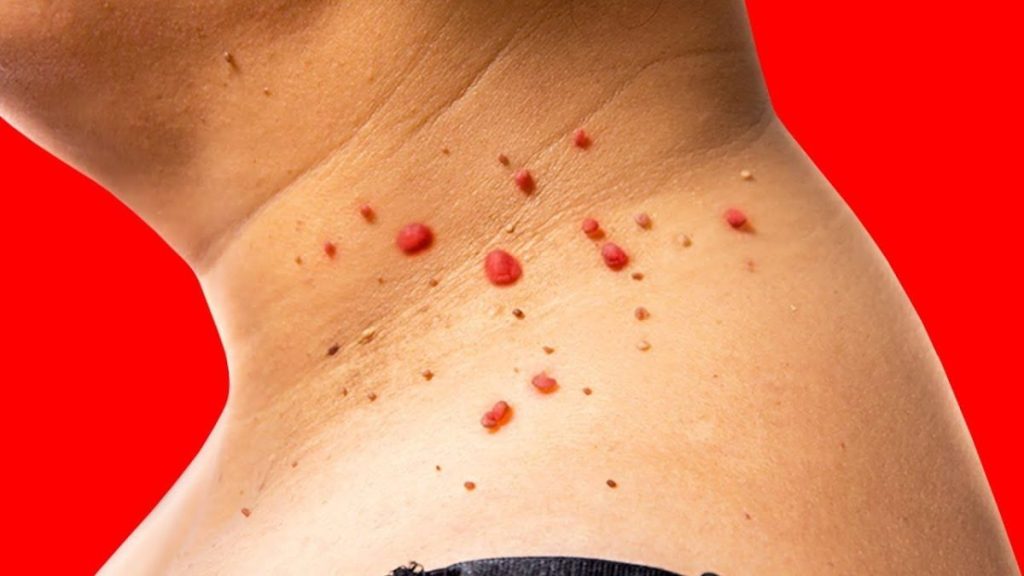Skin treatments have become increasingly popular in recent years due to their functional and cosmetic benefits. According to a report by Statista, the global skin treatment market was valued at USD 18.71 billion in 2023 and is expected to continue growing.
One common skin concern that many people seek treatment for is skin tags. Skin tags are harmless growths on the skin that can be removed for cosmetic and functional reasons. However, a skin tag removal cost can vary widely depending on the method chosen, ranging from DIY home remedies to medical procedures. So, how much does it cost to remove skin tags? Here’s a closer look at the cost of skin tag removal.
How Much Does Skin Tag Removal Cost?
Skin tag removal costs can vary depending on the method chosen and where you go for treatment. If you opt for a medical procedure, the cost can range from $100 to $500 per tag, depending on the location and the healthcare provider. On the other hand, DIY home remedies are generally much cheaper, with materials costing around $10 or less.
Where To Go For Skin Tag Removal?
When considering where to go for skin tag removal, there are a few options to consider. Dermatologists, plastic surgeons, and general practitioners can provide skin tag removal services. If you have a skin tag under your eye, it may be best to see a specialist, such as an ophthalmologist, to avoid any potential damage to your eye. For genital skin tags, you may seek a doctor who specializes in that area, such as a urologist or gynecologist.
Will My Insurance Cover My Skin Tag Removal?
As for insurance coverage, skin tag removal is generally considered a cosmetic procedure and, therefore, not covered by insurance. However, suppose a skin tag is causing a medical issue, such as getting caught in clothing or jewelry or causing irritation or pain. In that case, insurance may cover the cost of its removal. It’s best to check with your insurance provider to determine your coverage options.
Skin Tag Removal Procedures
There are several options for skin tag removal, each with its advantages and disadvantages. Here are some common skin tag removal procedures and their details:
Cauterization
This method uses a heated instrument to burn off the skin tag. It’s quick and effective but can be painful and may leave a scar. The cost is generally between $100 to $500 per tag.
Cryosurgery
This method uses liquid nitrogen to freeze off the skin tag. It’s a relatively painless procedure and has a low risk of scarring. The cost depends on the size and location of the skin tag and can range between $100 to $400 per tag.
Electrocautery
This method uses an electric current to burn off the skin tag. It’s a quick and effective procedure but can be painful and may leave a scar.
Ligation
This method involves tying off the skin tag with a thread to cut off its blood supply, causing it to eventually fall off. It’s a low-risk procedure, but it may take longer for the tag to fall off. The cost is generally low and can be done at home.
Surgery

This method involves cutting off the skin tag with a scalpel or scissors. It’s a quick and effective procedure but can be painful and may leave a scar. The cost is also usually higher than other methods and can range between $100 to $1000 per tag.
Natural Home Remedies To Remove Skin Tags
There are also several natural home remedies that can be used to remove skin tags. Here are some popular options:
Apple cider vinegar
To do this method, saturate a cotton ball with apple cider vinegar and stick it on the skin tag for several hours daily. Over time, the acid in the vinegar breaks down the tag, causing it to eventually fall off. It’s a low-cost option, with apple cider vinegar generally costing around $5 to $10.
Tea tree oil
Essential oils for skin tags can be a great option. Tea tree oil is said to have antimicrobial and antifungal properties that help to break down the skin tag over time. Simply apply a few drops of tea tree oil to the skin tag twice daily. Tea tree oil generally costs around $10 to $15.
Vitamin E oil
This method involves applying vitamin E oil to the skin tag several times daily. The oil’s antioxidant properties help in breaking down the skin tag over time. Vitamin E oil generally costs around $10 to $20, depending on the brand.
Baking soda and castor oil
This method involves making a paste of baking soda and castor oil and applying it to the skin tag several times. The mixture’s alkaline properties help break down the tissue of the tag. It can often cost around $5 or less.
Garlic

This method involves crushing a garlic clove and applying it to the skin tag several times daily. The garlic’s enzymes are ideal for breaking down the skin tag over time. Garlic cloves generally cost around $5 or less.
Banana Peel
This method involves rubbing the inside of a banana peel on the skin tag for several minutes a day. The enzymes in the banana peel are said to help break down the skin tag over time. It’s a low-cost option, costing around $2 to $5.
When it comes to choosing between natural home remedies and clinic procedures, it ultimately depends on the individual and the severity of the skin tag. While natural remedies are generally safe and cost-effective, they may not be as effective for larger or more complicated tags. It’s important to discuss your options with a healthcare provider to determine the best course of action.
Are There Any Alternative Options?
Yes, there are alternative options for skin tag removal that some people use, such as tying dental floss tightly around the base of the tag to cut off its blood supply, causing it to fall off eventually. However, this method is not recommended as it can lead to infection or scarring if not done correctly. It’s important to note that while home remedies and alternative methods may work for some people, they may not be as effective or safe for others. It’s always best to discuss your options with a healthcare provider to ensure the safest and most effective removal method for your specific situation.
Are There Risks Associated With Skin Tag Removal?
Yes, there are risks associated with skin tag removal, including bleeding, infection, scarring, and skin discoloration. It’s important to follow proper aftercare instructions and consult a healthcare provider if you experience any complications.
What To Expect After Removing Skin Tags?
After removing skin tags, there may be some mild pain, redness, or scabbing at the site of removal. It’s essential to keep the area clean and dry and follow any aftercare instructions provided by your healthcare provider.
When To See a Dermatologist

You should see a dermatologist if you have concerns about a skin tag, especially if it changes in appearance or size, becomes painful, or bleeds. A dermatologist can evaluate the tag and recommend the best course of action.
How To Prevent Skin Tags From Coming Back?
Unfortunately, there is no guaranteed way to prevent skin tags from coming back. However, maintaining good skin hygiene, avoiding tight clothing, and maintaining a healthy weight may help reduce the likelihood of developing new tags.
FAQs
Can skin tags be cancerous?
Skin tags are generally not cancerous and are considered harmless. However, in rare cases, a skin tag may resemble a skin cancer or be found to be a type of skin cancer upon biopsy. It’s important to have any suspicious skin growths evaluated by a healthcare provider.
Do skin tags grow bigger?
Skin tags can grow over time, but they typically remain small and don’t cause pain or discomfort. If a skin tag grows rapidly, changes in color or shape, or becomes painful or irritated, it’s essential to have it evaluated by a healthcare provider.
Do skin tags spread?
Skin tags are not contagious and do not spread from person to person. Some people may be more prone to developing skin tags, and they can appear in new locations over time due to factors like skin friction and hormonal changes.
Do skin tags grow back?
Skin tags can grow back after they have been removed, primarily if the underlying cause is not addressed. But proper removal techniques and aftercare can help minimize the likelihood of recurrence.
What vitamins are good for skin tags?
No scientific evidence suggests that any specific vitamin is beneficial for preventing or treating skin tags. However, maintaining a balanced and healthy diet that includes vitamins A, C, D, and E may help promote overall skin health.
How long should skin tags last?
Skin tags can last for a long time if left untreated. Once they develop, they typically do not go away on their own. But skin tags can be safely and effectively removed with proper treatment.
Skin tag removal is a popular choice for many people seeking to improve the appearance and function of their skin. It’s important to consider all available options when determining the best course of action and the associated skin tag removal cost. The above guide provides a comprehensive overview of skin tag removal costs and procedures and natural home remedies that may be used to remove skin tags. Consider these factors when making an informed decision about skin tag removal.


